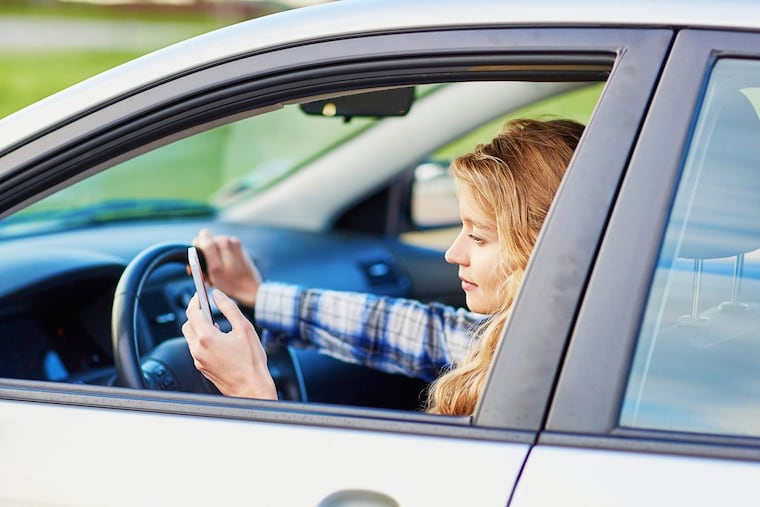How to stop teens from texting while driving? Try money
Cellphone blocking technology, such as automated screen locking and permitting hands-free navigation, combined with behavioral economic incentives to sustain engagement may help usher in safer driving.

How does one get teenage drivers to put down their phones while driving? Try making them an offer they can't refuse: money.
That's one of the strategies suggested by a new survey of adolescent attitudes about phone use and driving that was conducted by researchers at Children's Hospital of Philadelphia and Perelman School of Medicine at the University of Pennsylvania.
The study results, published online this month in the journal Traffic Injury Prevention, involved about 150 Philadelphia-area high school students ages 16 and 17 who own a smartphone, drive regularly, and admitted to texting while driving. A little more than half of the survey participants reported "high frequency" texting and driving.
The researchers asked students to consider strategies or factors that would help them refrain from texting while operating a vehicle, especially measures that could be implemented through technology-assisted controls or incentives.
Those with the highest ratings were measures that offered financial benefits, such as a cash reward for every week they don't text while driving, a group contest with a monetary prize, or auto insurance discounts. The programs would use phone apps to monitor compliance.
Youths who took part in the survey were also amenable to technology that silences incoming notifications while driving, locks phones, or sends automatic replies to incoming texts.
With drivers 16 to 19 years old more likely to die in cellphone distraction-related crashes than any other age group, the need for effective strategies is great, said the study's researchers.
"More than half of teens in the United States admit to texting while driving, and this has become a significant public health issue leading to preventable deaths and disabling injuries," said study lead author M. Kit Delgado, a Penn assistant professor of emergency medicine.
"Our study suggests a promising strategy to curb this epidemic would include enabling a phone setting or third-party app with automatic responses to incoming texts … combined with financial incentives to sustain use," the trauma center physician added.
The National Highway Traffic Safety Administration has already recommended implementing a "driver mode" in cellphones, similar to the mandated "airplane mode," to limit phone use while driving, the study states. Last year, a "do not disturb while driving mode" was made available on iPhones, but, the study notes, it's optional.
"Apps and settings aimed at reducing cellphone distraction while driving can only be effective from a population health standpoint if they are widely adopted," Delgado said.
Most of the students in the survey understood the importance of phone-use-limiting measures. The vast majority of survey takers said they were willing to give up reading emails, using social-media apps, and sending and reading texts while driving. And many of them felt blocking technology would help prevent them from getting distracted or taking their eyes off the road.
Not many of the frequent phone-using teen motorists, however, were willing to give up their phones' navigation or music phone functions while driving.
And while blocking apps did find support, the biggest reason young drivers were wary of such measures was the belief that the apps would let their parents monitor their driving behavior.
But the researchers found that the offer of financial incentives went a long way to making the phone-use-limiting measures more palatable.
Ultimately, the study concluded: "Promising strategies for increasing acceptance of cellphone blocking technology among teen drivers include automated screen locking and permitting hands-free navigation and music combined with behavioral economic incentives to sustain engagement."